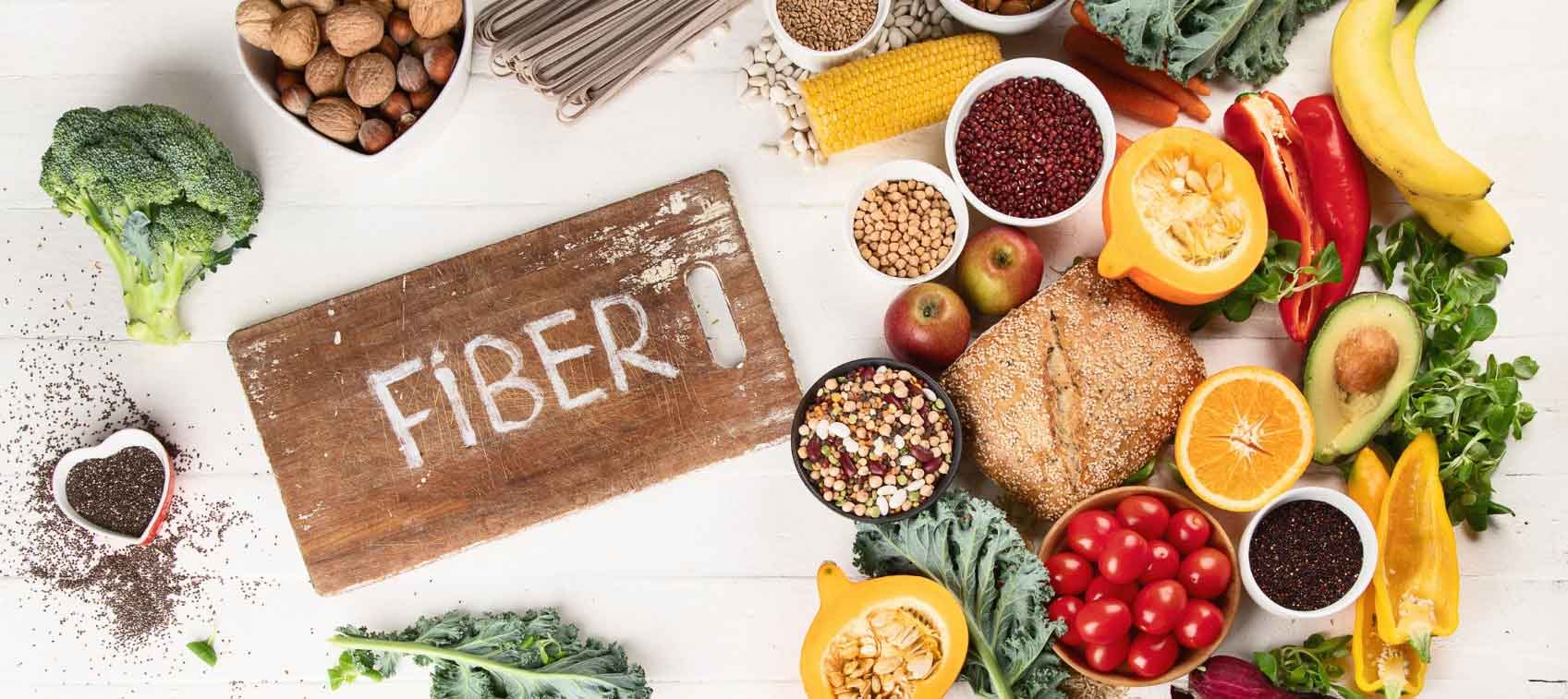
I distinctly remember, as a child, associating prunes with the cure for constipation. Whenever anyone in the home was experiencing anything related to constipation, prunes were the solution. Prunes certainly do contain a lot of fiber and get the bowels moving, but there are many other sources of fiber that not only support the bowels but many other systems in our body.
Fiber is classified as a carbohydrate and is technically defined as plant material that cannot be completely broken down by digestive enzymes. There are two main components of fiber known as soluble and insoluble fiber.
- Soluble fiber dissolves in water and helps delay gastric emptying, which can promote feelings of satiety and fullness. This is fiber that comes from fruits like blueberries, figs, plums, prunes, ripe bananas, and the skins of apples and pears. It’s also found in certain grains, legumes, and vegetables.
- Insoluble fiber does not dissolve in water and helps bulk up stool, which can help with bowel regularity and improve conditions like constipation, hemorrhoids, and diverticulitis. Insoluble fibers are found in whole grains, nuts, seeds, legumes, and some vegetables. Unripe bananas and avocadoes are examples of fruits that contain insoluble fiber.
As Americans, we simply do not consume enough fiber, and fiber is very beneficial for overall health. Currently, most Americans consume around 15 g of fiber or less per day, when we should be consuming 25 grams or more a day. In fact, the USDA conducted surveys and found that 95% of adults and children do not consume the recommended amounts of dietary fiber! The good news is getting more fiber through the diet isn’t that difficult.
As many of you know, I’m a big paleo enthusiast. If you eat a paleo-like diet, you’ll have no problem getting plenty of fiber through an assortment of whole, unprocessed foods. If you begin to cook vegetables regularly, which may include baking, steaming, sautéing, grilling, etc., you will increase your fiber intake. Add on some fruits as well as whole grains like brown rice or amaranth or lentils, and very quickly you’ll reach the USDA recommendation of 25 grams of fiber or more per day.
The goal is to SLOWLY introduce more fiber into your diet. Going from 10 grams a day to 35 grams a day will surely lead to temporary gastrointestinal side effects like gas, bloating, and abdominal pain. Soon, I’ll share with you some quick and easy ways to incorporate more fiber in your diet in addition to eating more fruits, vegetables, and grains. But before I do that, I want to tell you all about the benefits of fiber.
8 Benefits of Fiber
Even if you don’t suffer from constipation, it’s essential to consume fibrous foods because fiber is so beneficial for the entire body. Research has shown that fiber benefits and improves the following:
- Cardiovascular disease
- Diverticular disease
- Bowel regularity
- Diabetes and blood sugar control
- Immune system function and inflammation
- Weight loss and management
- Other gastrointestinal disorders
- The gut microbiome
In regards to the gut microbiome, we’re learning that fiber is very beneficial because it helps feed the good bacteria living in the colon. Some fiber is classified as a prebiotic, which means that it provides a fuel source for the gut flora. The gut flora then produce short chain fatty acids (SCFA’s) from these prebiotic fibers.
In addition to helping produce SCFA’s, prebiotics are also responsible for the following:
- Improvement in gut barrier function
- Reduction in pathogenic (bad) bacteria
- Improvement in host immunity (immune system function)
So as you can see fiber does so much more than get the bowels moving. It’s great for the heart, blood sugar, immune system function, weight management, and many gut related conditions like diverticular disease or IBS.
Other Supplemental Fiber Sources
One major problem with processed foods is many of them have been stripped away of the naturally occurring fibers, and you’re left with a food product full of sugar, fillers, preservatives, and other substances that surely are not good for your body. When you eat whole foods (foods that have not been adulterated) you are guaranteed to get more fiber through those foods.
Yes, consuming fruits, vegetables, nuts/seeds, and grains are the best ways to improve your fiber status, as these foods contain many other health promoting compounds like vitamins, minerals, and anti-oxidants for example. But what are some other ways to get fiber into your body?
The following are my go to recommendations to patients who want to take a gluten free supplemental fiber product. As a reminder, start off low dose and go slow! The last thing you want to do is consume a bunch of fiber and forget to drink water and—voilà—you get even more constipated.
1. Psyllium Seed Husks
This supplemental fiber is 70% soluble fiber and is helpful for those who want to bulk up their stool and reduce cholesterol levels. It can be helpful for those who alternate between constipation and diarrhea. Try adding 1 teaspoon to some water or nut milk. Then chase it with another 4+ ounces of water. Slowly work your way up to 1 tablespoon or more, and make sure you drink plenty of water afterward to prevent constipation. I suggest buying organic psyllium seed husks when possible.
2. Ground Flax Seeds
Freshly ground flax seeds contain a mixture of insoluble and soluble fiber. They are high in alpha linoleic acid, which is a plant-based omega 3 fatty acid that you can only get through the diet. They also help bulk up stool. I’ll usually suggest ground flax seeds to peri and postmenopausal women for the added phytoestrogen effect. I prefer to add 1-2 Tbsp freshly ground flax seeds to almond milk, to a grain free granola, or on top of homemade coconut yogurt (watch how to make this below.)
3. Chia Seeds
Chia seeds are mainly insoluble fiber with a small amount of soluble fiber and are also considered a pre-biotic fiber. Just like flax seeds, they contain the healthy fat alpha linoleic acid, plus a small amount of protein as well. Chia seeds are wonderful for helping with constipation as they soak up water, which keeps stools moist and easier to pass. My favorite way to consume chia seeds is to make coconut milk chia seed pudding (see recipe below), or they can be ground up and added to almond milk, yogurt, or cereals.
Coconut Milk Chia Seed Pudding Recipe:
- 2 cans of coconut milk
- 1/4-1/2 cup of chia seeds (depending on how thick you like your pudding)
- 1 Tbsp of maple syrup
- 1 tsp of ground cinnamon
- pinch of ground cardamom
- pinch of salt
- Put all ingredients into a glass Pyrex or any other container with a sealed top. Shake vigorously for 30 seconds and then place in refrigerator. Will be ready to eat within 3 hours. Can add any fresh fruit like mango, blueberries, blackberries, raspberries, or banana.
Resources:
https://www.hsph.harvard.edu/nutritionsource/carbohydrates/fiber/


